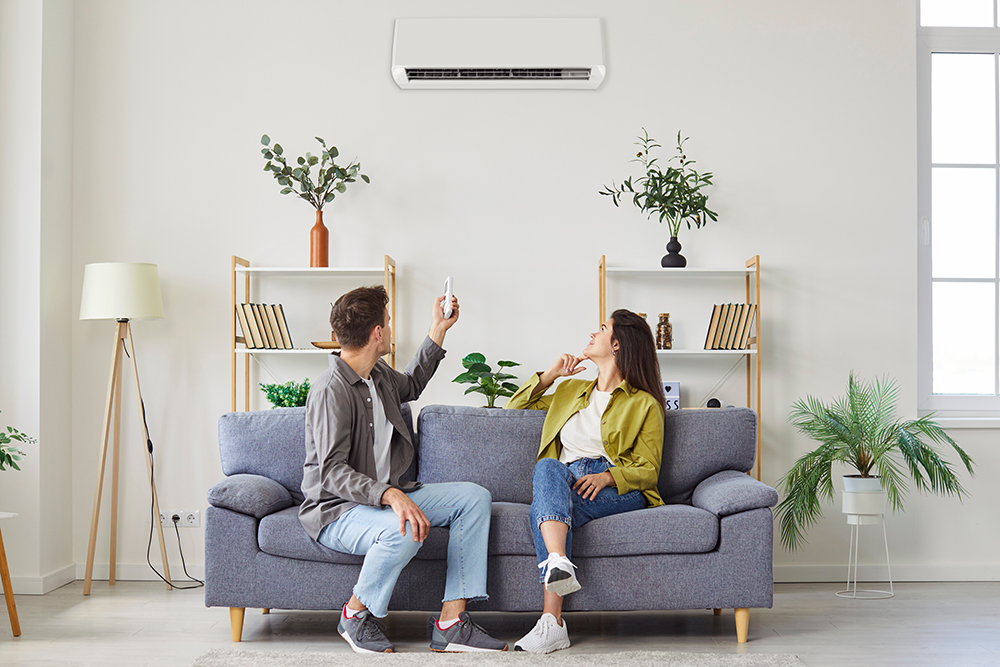
Choosing an energy-efficient air conditioner is a smart move that saves you money and reduces your environmental footprint, says DAVID ELLINGSEN, of Plumbing & Gas Pty Ltd.
With so many air-conditioning options on the market, it can be tough to know which features truly make a difference.
Whether you’re looking to lower your electricity bill or simply do your part for the planet, investing in an AC unit that maximises energy efficiency is key.
This guide will walk you through the essential factors to consider − such as energy ratings, smart features and inverter technology − so you can confidently choose an air conditioner that keeps you cool or warm without breaking the bank.
Understand energy efficiency ratings
When shopping for an energy-efficient air conditioner, it’s important to understand the ratings that indicate how well a unit will perform. The most common ratings you’ll come across are SEER (Seasonal Energy Efficiency Ratio) and EER (Energy Efficiency Ratio).
SEER measures an AC’s efficiency over an entire summer (or winter) season, considering fluctuating outdoor temperatures. A higher SEER rating means greater efficiency and more savings on your energy bill. EER, on the other hand, measures efficiency at a constant temperature, so it gives you an idea of the unit’s performance under peak conditions.
Choosing a model with high SEER and EER ratings can significantly reduce your energy costs over time. Look for units that also carry an Energy Star label (see below), as they meet strict energy efficiency guidelines set by the government.
By understanding these ratings, you’ll be better equipped to pick an air conditioner that keeps you cool or warm without consuming too much power.
Choose the right size for your space
Choosing the right size air conditioner for your space is essential for maximising energy efficiency. An air conditioning unit that’s too large or too small can lead to wasted energy and uncomfortable temperatures.
Here’s what to consider when picking the right size:
- Measure your room in square metres: Knowing the size of the room helps you determine the cooling and warming capacity you’ll need. Larger spaces require higher BTUs (British Thermal Units) to maintain climate control effectively.
- Check the AC’s BTU rating: Every air conditioner has a BTU rating that indicates how much space it can cool and warm. Generally, a room up to 45m2 needs about 5000 BTUs, while larger areas may need 10,000 BTUs or more.
- Consider ceiling height and sun exposure: Rooms with high ceilings or lots of sunlight may need a more powerful unit, while shaded or smaller spaces might not need as much cooling (or warming) power.
Selecting the correct size helps your AC operate efficiently, saving you energy and money.
Look for the Energy Star label
When selecting an energy-efficient air conditioner, the Energy Star label is a quick and reliable indicator of efficiency. This label identifies appliances that meet or exceed strict energy efficiency guidelines.
“Air conditioners with the Energy Star label use up to 10 per cent less energy than standard models, helping you save on your electricity bill while reducing your carbon footprint,” says an air conditioning technician at metropolitanairconditioning.com.au/
Energy Star-certified AC units often come with advanced features such as improved insulation, enhanced airflow, and smart temperature controls.
These elements work together to maximise climate control without wasting energy. Plus, the Energy Star label isn’t just about efficiency − it also reflects quality. These units are rigorously tested to ensure they deliver reliable performance over time.
So, when you’re browsing for a new air conditioner, checking for the Energy Star label is a simple way to ensure you’re getting an AC unit that’s both eco-friendly and cost-effective.
Consider inverter technology
Inverter technology is a key feature to look for when choosing an energy-efficient air conditioner. Unlike traditional units that turn on and off repeatedly, inverter air conditioners continuously adjust their speed to maintain a steady temperature.
Here’s why that matters:
- Energy savings: Inverter air conditioners consume less power by operating at variable speeds, avoiding the energy spikes of constant start-stop cycles. This can lead to significant savings on your electricity bill.
- Consistent comfort: With inverter technology, your AC adjusts automatically to maintain a stable indoor climate. You won’t experience the temperature fluctuations that can happen with non-inverter models.
- Quieter operation: Because inverter units don’t have to constantly power up and shut down, they run more quietly. This makes them a great choice for bedrooms or other quiet spaces.
- Longer lifespan: By avoiding the strain of frequent starts and stops, inverter ACs experience less wear and tear, potentially extending their overall lifespan.
Opting for inverter technology can enhance both efficiency and comfort in your home.
Assess smart features for enhanced efficiency
Smart features in air conditioners can significantly enhance energy efficiency and provide added convenience. Here are some key features to look for when choosing an energy-efficient HVAC system:
- Smart thermostats: These allow you to control and schedule your air conditioner remotely using a smartphone app. You can adjust the temperature even when you’re not home, ensuring you only use energy when needed.
- Geofencing: This feature can detect when you’re near home and automatically adjust the AC settings, so you walk into a perfectly cooled or cosy warm space without leaving the unit running unnecessarily.
- Voice control: Many smart AC units are compatible with virtual assistants such as Alexa or Google Assistant, enabling you to control the unit hands-free and easily manage energy use.
- Energy usage reports: Some models provide insights into your energy consumption, helping you understand how to optimise your settings for maximum efficiency.
Smart features make it easy to maintain comfort while reducing energy waste, adding both efficiency and convenience to your climate control.
Check for additional energy-saving features
In addition to energy ratings, consider extra features that can boost your air conditioner’s efficiency. Many units come with modes such as “eco” or “energy saver”, which automatically adjust settings to minimise power use.
These features often involve the AC unit cycling on and off, or reducing fan speeds, to avoid excessive energy consumption while still maintaining a comfortable temperature.
Another handy feature is sleep mode. This setting gradually adjusts the temperature overnight, keeping you cool or warm while you sleep without running at full power all night. Variable fan speeds are also useful, as they let you control airflow to suit your needs without wasting energy.
Some models even include humidity control, which can make your home feel cooler and more comfortable, allowing you to set the temperature higher and use less energy overall. Checking for these added features can make a big difference in both comfort and savings on your utility bill.
Make a positive difference
Choosing an energy-efficient air conditioner is a wise investment that can lower your power bills and reduce your environmental impact. By understanding energy ratings, selecting the right size, and exploring options such as inverter technology and smart features, you can find an AC that meets your needs while saving energy.
Don’t forget to look for the Energy Star label as a quick indicator of high efficiency. With these tips in mind, you’re well-equipped to pick an air conditioner that will keep you comfortable, save money and make a positive difference for the planet. Stay cool (or warm) and energy-conscious.
Who can be trusted?
In a world of spin and confusion, there’s never been a more important time to support independent journalism in Canberra.
If you trust our work online and want to enforce the power of independent voices, I invite you to make a small contribution.
Every dollar of support is invested back into our journalism to help keep citynews.com.au strong and free.
Thank you,
Ian Meikle, editor








Leave a Reply